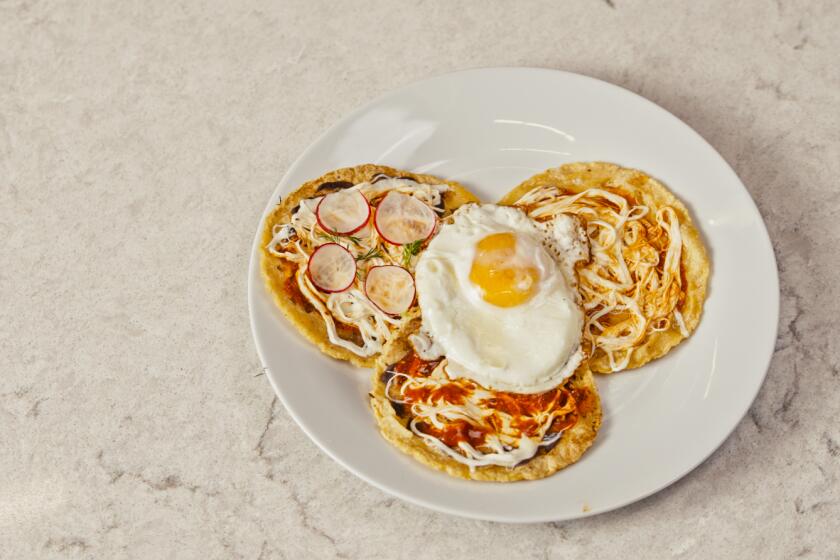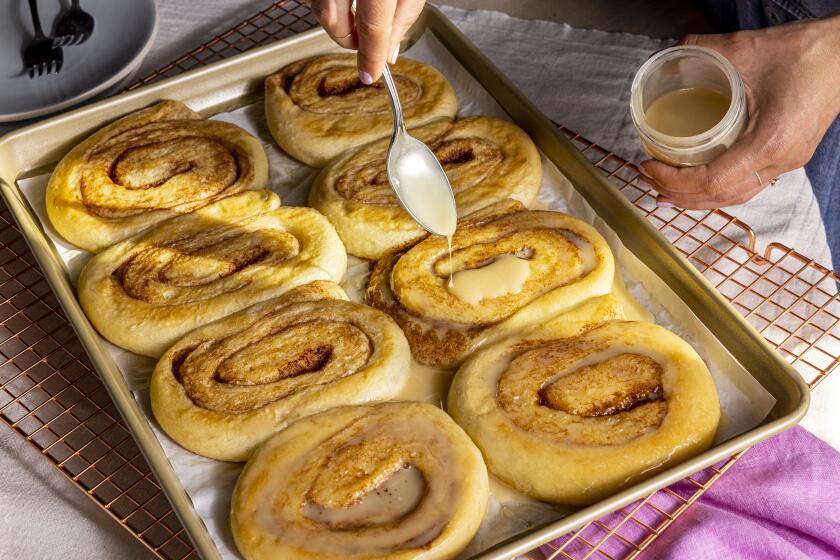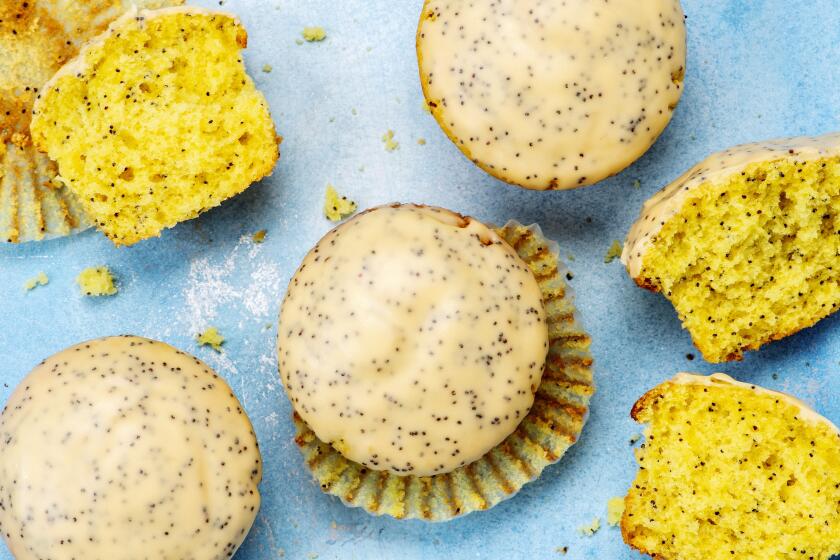Louisiana Pancakes
Pancakes are for breakfast, but in wartime people do what they must to survive. On Jan. 17, 1943, the Los Angeles Times Home Magazine published a food column devoted to serving “piping hot” flapjacks for dinner.
“Get out the griddle and stir up the batter for here are new pancake recipes and surprise variations,” the article by Food Editor Marian Manners began.
The biggest surprise was the time they were to be eaten. Because meat was scarce during World War II (rationing began two months later), Manners decided to adapt the pancakes for lunch and dinner menus. They’d still be a mainstay of the breakfast table, she explained, but they could also “delight a hungry family” in the afternoon or evening.
She suggested adding chopped apples to the batter or rolling the pancakes with fillings of jelly, cream cheese or asparagus topped with grated cheese. Chopped fish or meat could be mixed into the batter, which could then be baked on the griddle and served with a crisp green salad. Chopped chicken would work too, if first seasoned with chopped green pepper, onion and celery salt.
Or, she wrote, “serve pancakes when you need a meat extender by placing a small piece of meat on each pancake before it is baked. Ham or bacon is best.”
Each of Manners’ recipes called for self-rising buttermilk pancake and waffle flour--including the one for Louisiana Pancakes, made, of course, with rice.
Self-rising flour was a product much favored by consumers of that era. According to one source, self-rising Aunt Jemima Pancake Flour, which also could be used to make other things, such as biscuits, was introduced at the Chicago World’s Fair in 1893 and marketed nationally by 1910. It’s still sold today in the South. In 1889, one Chris L. Rutt developed the popular Aunt Jemima Pancake Mix, and in 1931, pancake-friendly Bisquick baking mix sold more than 500,000 cases within seven months of its introduction.
By 1943 advertisements for Globe “A1” Pancake and Waffle Flour ran regularly in the food pages of The Times. Globe “A1” no longer sells this combination of wheat flour, buttermilk and “five other baking ingredients.” But according to the ads, it was a “life saver for meatless meals”: “All you do is add milk or water, stir and bake.”
Beat egg slightly, add oil and mix until incorporated. Mix in rice and milk.
Mix sugar with baking mix in separate bowl and add to liquid ingredients. Mix until combined.
Pour 1/4 cup batter for each pancake on lightly greased griddle set over medium-low heat. Cook each pancake until batter is set, edges are dry and bottom is golden, 1 to 1 1/2 minutes. Flip and cook another 1 to 1 1/2 minutes. Serve with syrup.
Get our Cooking newsletter.
Your roundup of inspiring recipes and kitchen tricks.
You may occasionally receive promotional content from the Los Angeles Times.















